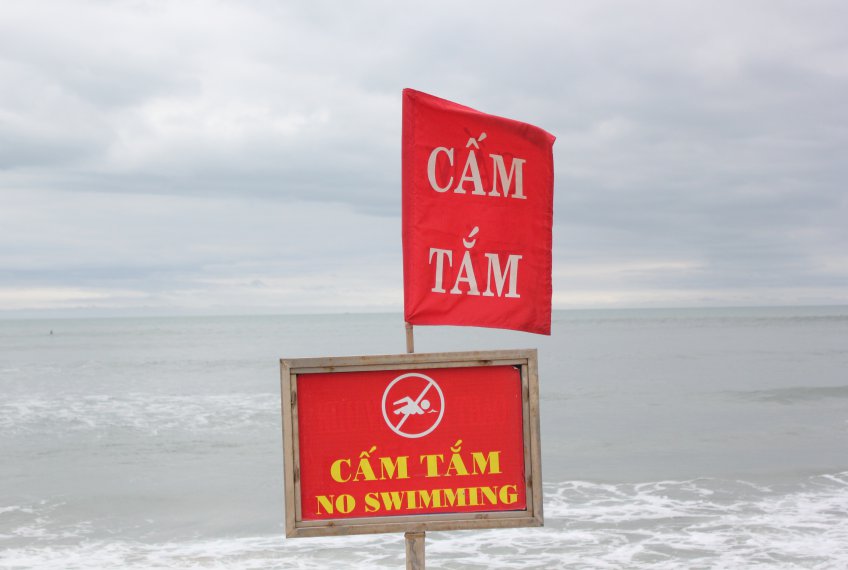Swim Safety in Vietnam

With the warm months fast approaching coastal Vietnam, there will be an influx of both tourists and Vietnamese heading for the waters. There’s nothing more enjoyable than a cooling dip in Vietnam’s East Sea to battle the sweltering temperatures and thick, humid air. But one thing that all swimmers need to remember, regardless of strength, skill and/or background, is the danger of drowning. According to the Alliance for Safe Children* (TASC), 32 children die every single day in Vietnam from drowning- and small children are not the only ones at risk! Even the strongest swimmers can be overpowered by things such as riptides and exhaustion, so swim safety must be heeded by all coastal visitors.
If you are swimming in Vietnam’s beautiful waters, of which everyone should be able to enjoy, there are a few things that you should keep in mind.
First, ask yourself if you are a strong enough swimmer to actually go out into the water. If it’s a hot day, wading in shallow water where you can easily stand is just as refreshing as going further out. Don’t put yourself in a position that could lead to danger or exhaustion.
Second, you should always make sure that someone is aware you have gone swimming. Look for the nearest lifeguard on duty and swim within the boundaries that they have assigned. If there is no lifeguard on duty, make sure someone qualified in swim safety is with you or watching you, or don’t go swimming at all! 68% of Vietnam’s drowning victims were either alone or with peers; allow yourself to be rescued!
Third, make sure you have the appropriate swim gear. Don’t go swimming in shoes or pants (i.e. jeans), as they can become saturated with water and pull you underneath. Wear appropriate swimwear! If you are not a strong swimmer, use some sort of flotation device to help keep you afloat. If you become overtired and need a break from swimming, you can rely on these devices to keep you safe.
Fourth, be aware of your surroundings. Vietnam’s coastal waters may be beautiful and refreshing, but there are dangers such as rip tides that are extremely lethal. Look out for the red flags that mark no swim zones, and if you know how to spot them, stay far away from rip tides! A rip tide is a current in the ocean that flows outward and pulls you away from shore. Often these phenomena are not visible to the naked eye, and you don’t realize you are in one until it’s too late. If you do get caught in a rip tide, don’t panic, follow the flow of the current (which is usually away from the shore) and allow yourself to naturally move out of it. Riptides are the cause of many drowning deaths, where the swimmer exhausts his or her self by trying to swim against the powerful current. Even the strongest swimmers can be overpowered by these dangerous currents, so be aware!
Though it goes without saying, one should always follow the rules of the beach. Obey the signage, follow the flags and listen to the lifeguards… they are only trying to keep you safe! Be mindful of swim safety at all times, but don't forget to enjoy yourself!
*All drowning statistics are taken from Swim Safe


